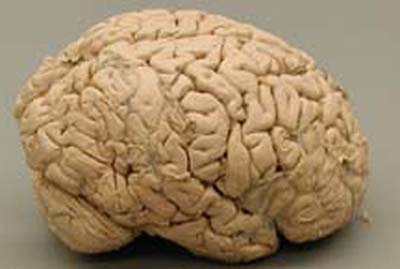Remote Ready Biology Learning Activities has 50 remote-ready activities, which work for either your classroom or remote teaching.
Serendip is an independent site partnering with faculty at multiple colleges and universities around the world. Happy exploring!
This web exhibit was first built in 2000 by Patricia Anne Kinser, Haverford College, under the direction of Paul Grobstein, Bryn Mawr College. The updated version of Comparative Neuroanatomy and Intelligence is now online at http://serendipstudio.org/exchange/brains. This old version has been archived in place, and will continue to be available for teachers and students who are using it. |
|
  So far we have looked at brains, compared their sizes and their outer appearances. We have thought a little about intelligence and the relation between brain and body size. We have explored a bit about the encephalization quotient. We have seen many different kinds of brains . . . but only from the outside. What if we look at these brains from the inside?? What will we see? What can we learn by slicing into a brain and exploring the structures inside? What would you like to learn? Looking at structures of the brain of an animal can reveal much about that animal. Have you thought of any differences between animals that interests you? As the pictures we've seen reveal, the brains of animals come in a large variety of sizes, shapes, and degrees of complexity. Why are they so varied? In what ways do different brains differ from one another? Do larger brains give greater adaptability to their owners? How are the observed differences in brain's external appearance reflected in their internal structure? Are different brains wired differently or made up of different materials? You also may have some questions about, say:
First, let's talk about the basics. What does it mean to "slice" a brain? Click on the button below . . .
| Forum | Brain and Behavior | Serendip Home | Send us your comments at Serendip © by Serendip 1994- - Last Modified: Wednesday, 02-May-2018 11:57:52 CDT |